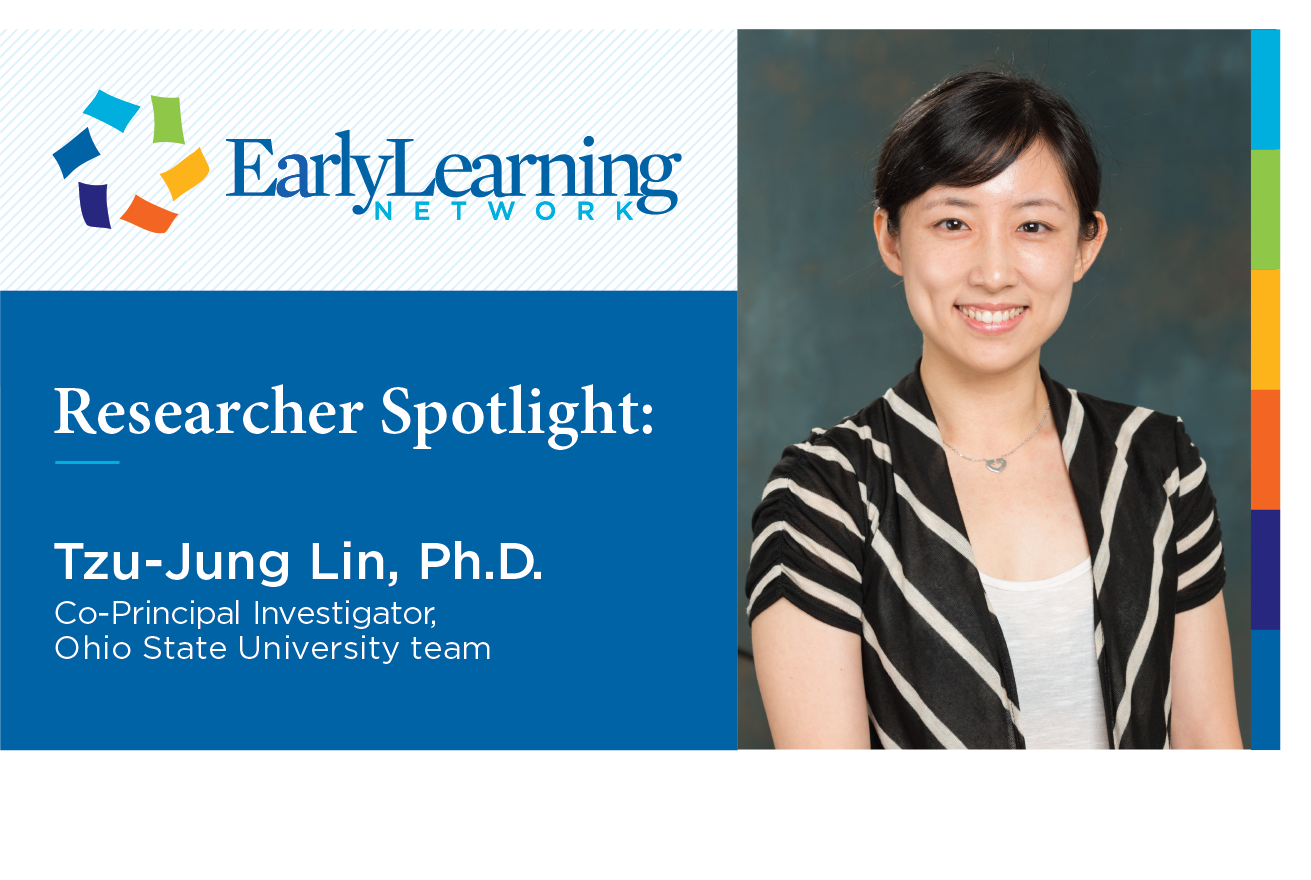
30 Aug Researcher Spotlight: Tzu-Jung Lin, Ohio State University
Q&A with Tzu-Jung Lin
Co-Principal Investigator, Ohio State University
Associate Professor of Educational Psychology, Department of Educational Studies
Faculty Associate, Crane Center for Early Childhood Research and Policy
Ohio State University’s Tzu-Jung Lin shares her perspective on the Early Learning Network’s research program, Early Learning Ohio, which examines educational practices and policies across the state.
Lin is particularly focused on increasing our understanding of how social connections in the classroom affect children’s learning and ongoing academic success.
Read the full Q&A below.
What is your role in the Early Learning Network?
I am co-principal investigator of Ohio State University’s Early Learning Ohio (ELO) research program. I am mainly involved in the design and implementation of our classroom observation and longitudinal studies (Study 2 and Study 3), which examine malleable factors comprising classroom ecology and their influences on early learning and development.
Particularly, I bring in the perspectives of social networks and peer influence to support the inquiry of social mechanisms underlying classroom ecology. In other words, I am interested in how peer interaction and relationships formed in the classroom affect children’s learning and ongoing academic success.
What makes you most excited about the Early Learning Network?
The Early Learning Network project involves five research teams working with geographically and demographically diverse schools and populations across the U.S. What makes me most excited about this project is the opportunity to apply various innovative methodologies to understand the complexity of classroom learning processes (e.g., instructional approaches, teacher-student and student-student interaction) across various classroom settings and their impacts of on multiple aspects of early learning and development.
What strengths or distinctive attributes does the OSU team bring to the Early Learning Network?
Ohio State University’s Early Learning Ohio research program places an emphasis on students’ social and learning experiences with peers — a major dimension of classroom ecology that can have long-lasting impacts on students’ academic life and psychological well-being.
Our project captures various forms of peer experiences, such as social networks, friendships, peer support, aggression and victimization, acceptance and exclusion, and small group vs. whole class experiences with peers.
Using our rich dataset that involves more than 3,300 students from a wide spectrum of pre-K to third grade classrooms, we will be able to examine how peer experiences affect early learning compared to other classroom ecology factors.
Currently, we are exploring several exciting research questions, such as how peer experiences shape student learning, and vice versa, how these peer experiences relate to other dimensions of classroom ecology (e.g., teachers’ instructional practices or classroom quality), how peer experiences differ across the diverse group of students participants (e.g., English learners), to name a few.
What challenges have you encountered thus far in your project?
It has been challenging to coordinate multiple informants’ perspectives on classroom environments. The fundamental assumption of multi-method, multi-informant assessments is that each informant/method provides relatively distinct information about classroom learning. As a student, what he or she perceives as normative forms of social interaction in the classroom may change her attitudes and approaches toward learning. As a teacher, what he or she perceives or expects from students may be associated with his or her teaching.
Interestingly, we have observed that teachers and students do not always have the same understanding of what is happening in the classrooms, and this discrepancy may point to certain mismatches between classroom instruction and student needs. A key element to the inquiry of early learning and achievement is understanding the underlying causes of congruence or incongruence between how teachers and their students perceive the classroom ecology.
Another challenge of this project, and a fun one, is to obtain direct information from our young participants regarding their classroom experiences. One of the techniques that we use in Study 2 and 3 is called peer nomination. Children are asked to nominate as few or as many classmates as they wish based on certain student characteristics. Even though the validity and reliability of this technique have been established, we still find it tricky at times to interview these young children.
According to one of our field assessors, Katie Filibeck, she tends to find preschoolers indecisive. They’ll pick one friend, and then change their mind and pick someone else, or everyone else. When she tries to explain the choices to them, they may look at her with their confused faces. Some children just decide to get up and run away. There are also times when the children are brutally honest and say whatever is on their minds, which can be absolutely hilarious.
What are you most looking forward to in the coming months?
This summer, our team has been actively analyzing the data collected from the cross-sectional classroom observation study. We are investigating how different dimensions of classroom ecology uniquely or jointly influence students’ academic, language, social-emotional and behavioral development.
I look forward to forming a comprehensive picture of the classroom ecology in early childhood education through our cumulative research findings, and disseminating them to the scientific and wider community.

